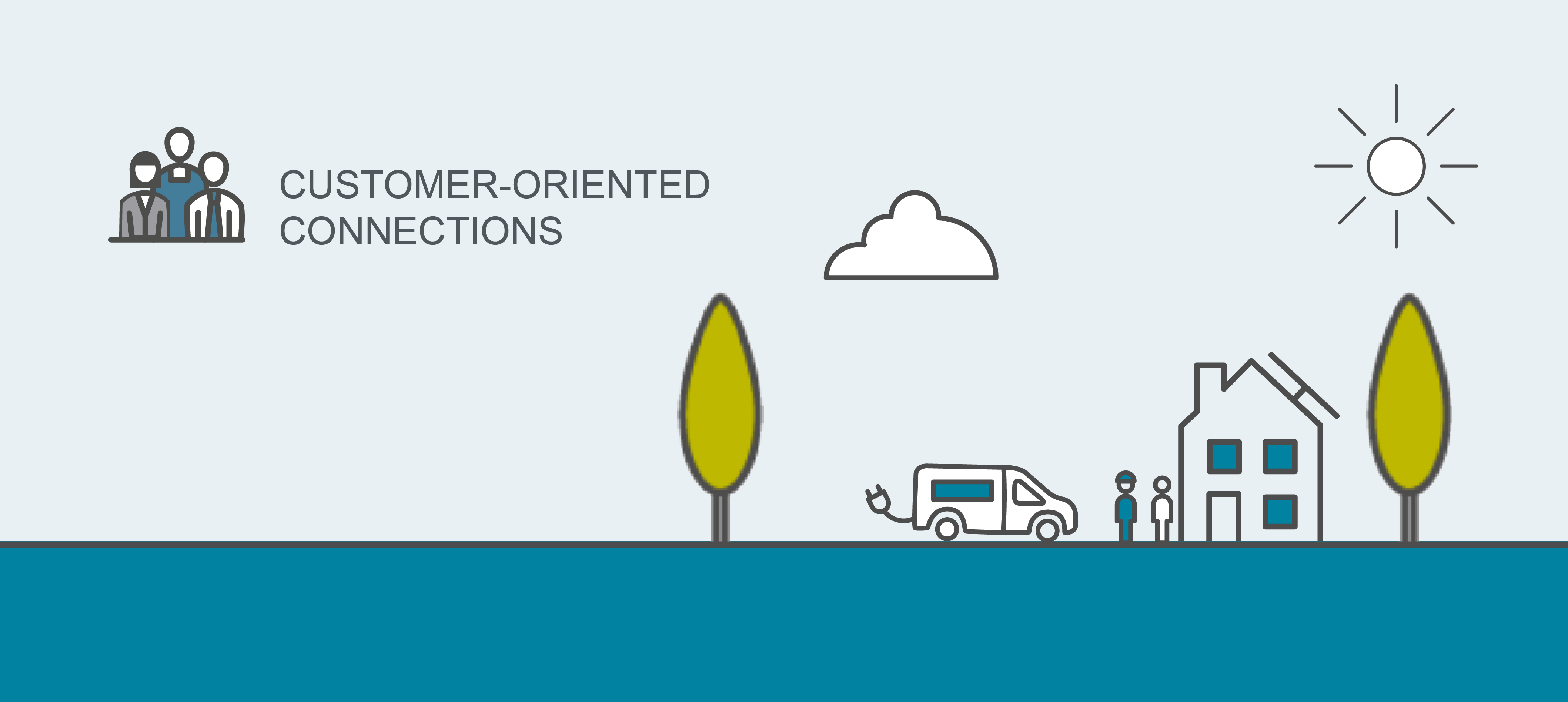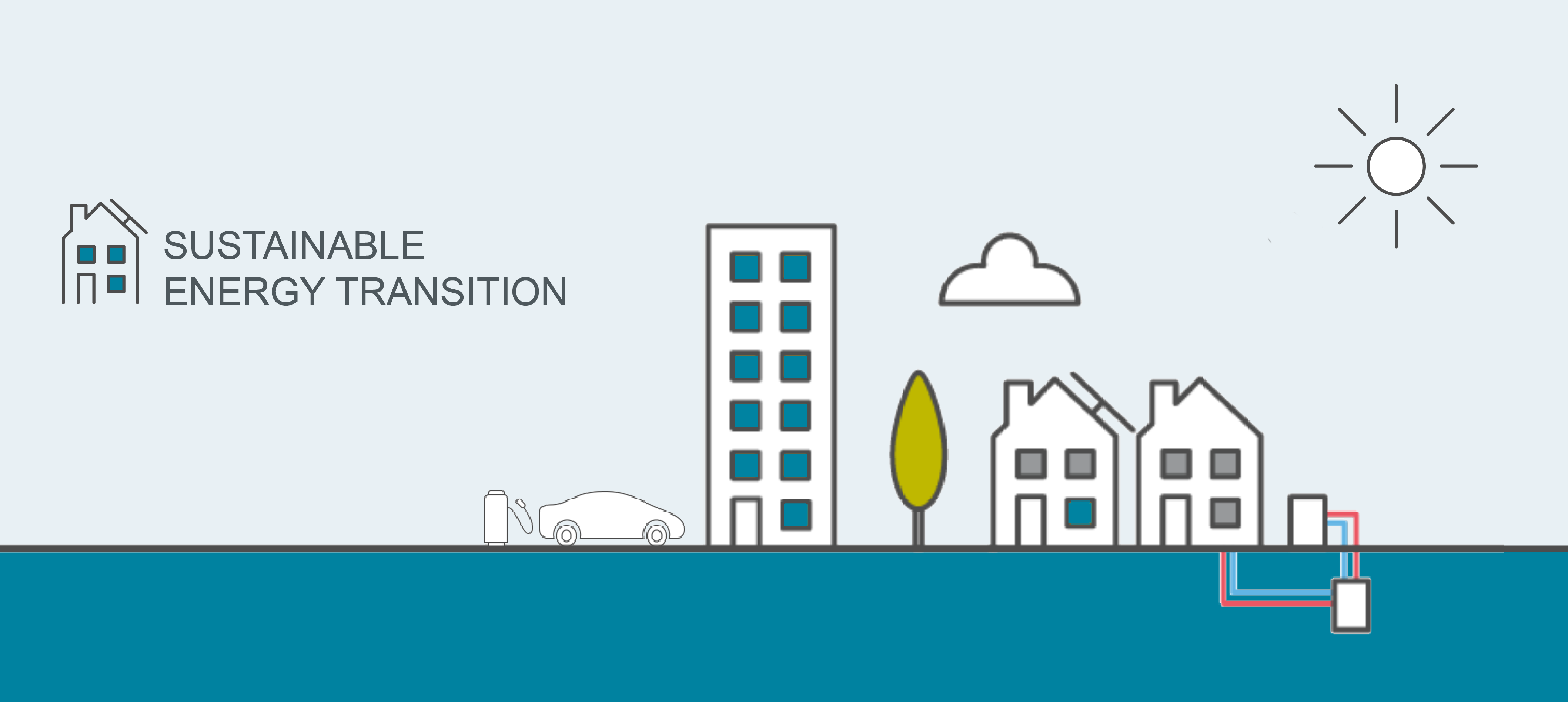Strategic initiatives
Within our strategic spearheads 'Improved grid management' and 'Facilitating the energy transition', we are focusing on four change projects that contribute significantly to realising our strategy. The strategic initiatives are 'Customer-oriented connections', 'Multidisciplinary collaboration', 'Sustainable energy transition' and 'System operator'. In this section, we discuss our results in relation to these projects in 2020.

On time and tailor-made
Customer-oriented connections enable us to provide customers with a tailor-made service on time and at the lowest possible societal costs. In pursuit of this, we are increasing cooperation indoors as well as outdoors, undertaking far-reaching digitalisation, organising our operations around the customers' requirements and contributing to making the Netherlands more sustainable together.
Our efforts at optimisation and digitalisation are complicated by the fact that we are changing while our regular work continues. We to this together with customers, IT and employees. Unexpected events such as the COVID-19 outbreak caused employees to shift their focus, adversely affecting the improvement that could be achieved. The target for 2020 was to save €2.9 million; at the end of 2020, we had achieved savings of €2.4 million. The improvements achieved by development teams are greater transparency in terms of process and data. This enables us to focus more effectively on our own process and that of the contractor, allowing us to identify more quickly how we can reduce cost.
Efficiency and customer satisfaction go hand in hand
By efficiently planning work below ground together, for the replacement of gas and water pipelines, for example, we were able to reduce costs by approximately 6% compared with 'solo' projects. To this end, we are concluding covenants with an increasing number of municipalities. An example is Rotterdam, where we jointly plan and execute our projects with the municipality and water company Evides. In 2020, 35 of all projects were carried out in this way. This coordinated approach will enable us to save between €2 million and €2.5 million for the public purse in the coming two years within the ‘Rotterdam Covenant’
By law, Stedin employees are prohibited from carrying out work for third parties. A complex legal construction is needed to diverge from this rule. Together with the drinking water companies, we are engaging with political leaders and ministries to seek ways of making a multidisciplinary working approach possible. In consultation with our regulators, we are trying to find ways to eliminate duplication in the chain in the interest of society, without complex and costly constructions. We expect that this will yield results within two years.
Multidisciplinary collaboration has been a common feature of our working approach for several years in Zeeland and regularly attracts participation by media parties. An example is a project in a district in Oost-Souburg. Here, the contractor has started replacing the sewers and all the road surfaces. DNWG Infra has commissioned the replacement of all the distribution gas pipelines and water mains as well as the medium and low-voltage cables. In the interim period, almost all the home connections for gas, water and electricity will be replaced in a combined programme. For the multidisciplinary working approach in Zeeland, the services agreement (in which water company Evides was the client and DNWG the contractor) was replaced with effect from 1 January 2021 by a cooperation agreement, under which both partners work together on an equal footing. This agreement was signed on 7 December 2020.

Ready for the future
As in previous years, we once again struck up an extensive dialogue with provinces, municipalities and market parties about our collective endeavour in the energy transition in 2020. Our product and proposition managers, a new team within Stedin, developed a set of suitable products and services for sustainable generation, mobility and the heat transition for this purpose.
We aim to influence long-term planning in the Regional Energy Strategies, the National Agenda on the Charging Infrastructure Network and Transition Visions for Heat among municipalities. We are also in active discussions with customers about short-term plans, and we ensure that we can meet customer requirements at the lowest possible cost.
We aim to make well-considered choices and to offer our customers realistic expectations in terms of what is and what is not possible and the timescale for implementing projects. In this light, we are seeking to improve our demand forecasting ability. From 2020, a newly formed Market Intelligence team provides insight into customer requirements and demand and offers future scenarios for correct decision-making. The result is an investment portfolio that is up to date and customer driven and is more in line with current and future developments.

Overseeing and directing the energy system
Stedin launched the ‘System Operator’ strategic initiative in early 2020. Within this initiative, we are expanding our role as a manager of physical grids with the management of digital data flows. We are exchanging more and more data with customers, municipalities, market parties and other grid managers on a range of topics, such as available grid capacity and the best place for a charging square or solar farm. We make important choices together. Where capacity problems arise, we make agreements with major customers, such as commercial growers, for example, on flexible electricity consumption or generation and feed-in. Alongside our role as a grid manager, we therefore increasingly oversee and direct the energy system – hence the name ‘system operator’. As a system operator, we ensure that we predict, plan and control the consumption and feed-in of electricity in a smart and digital manner.
2020 was a year of putting foundations in place, such as preparing necessary upgrades of our core systems GIS (geographic information system: location and characteristics of our assets, network topology) and SCADA (monitoring and management of the energy systems by our Network Operations Centre). A uniform chain was also developed for the installation, management and reading of tens of thousands of sensors and other smart assets in an identical manner. Moreover, we are now able to calculate the impact of energy transition scenarios on our electricity grid. This is done based on an up-to-date representation of our network. The calculations subsequently enable us to determine where to invest in our grids. In 2020, we also carried out pilots for market-driven congestion management in Zuidplaspolder and Bleiswijk. As a result, we can now make better use of the capacity of the electricity grid in that area.
